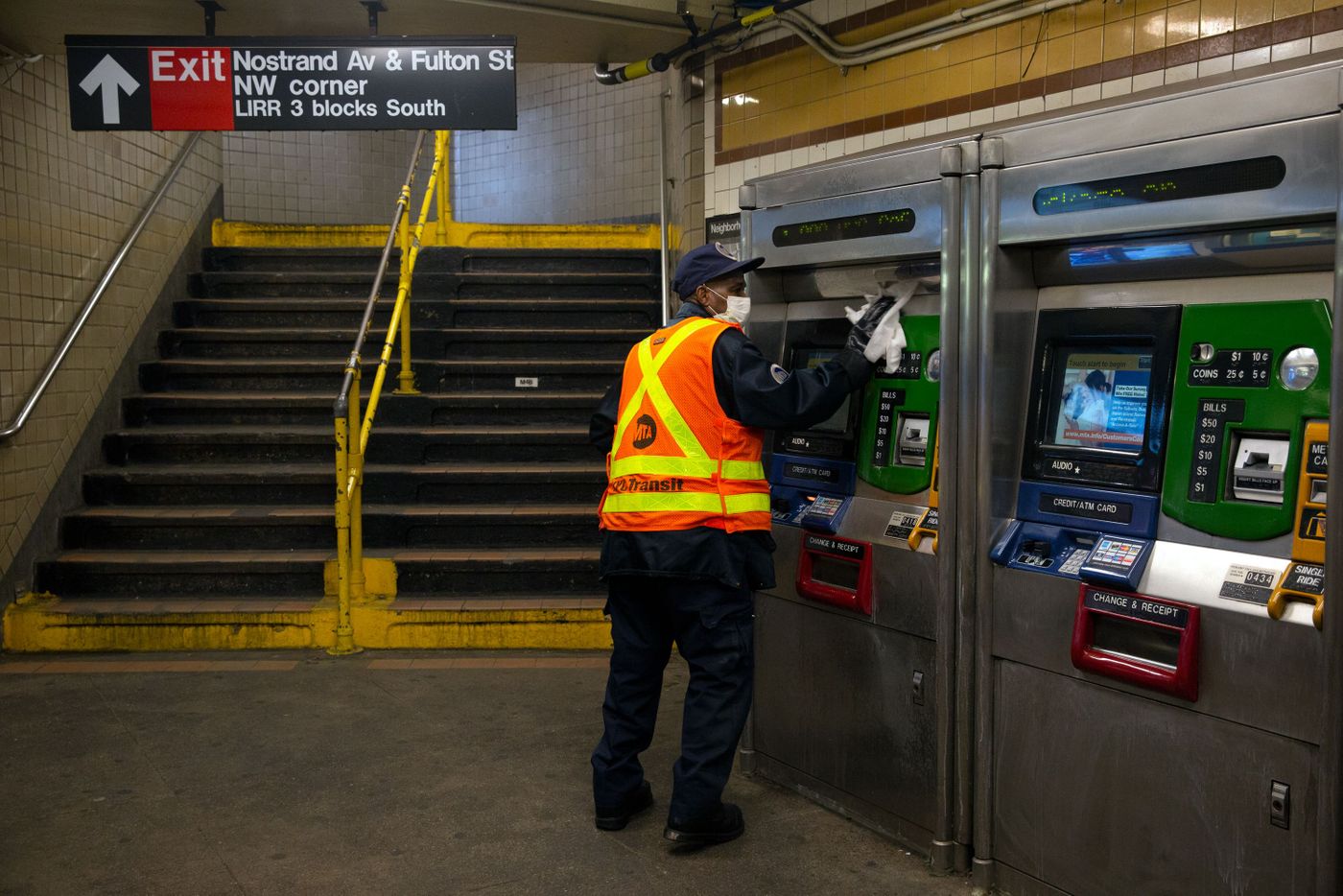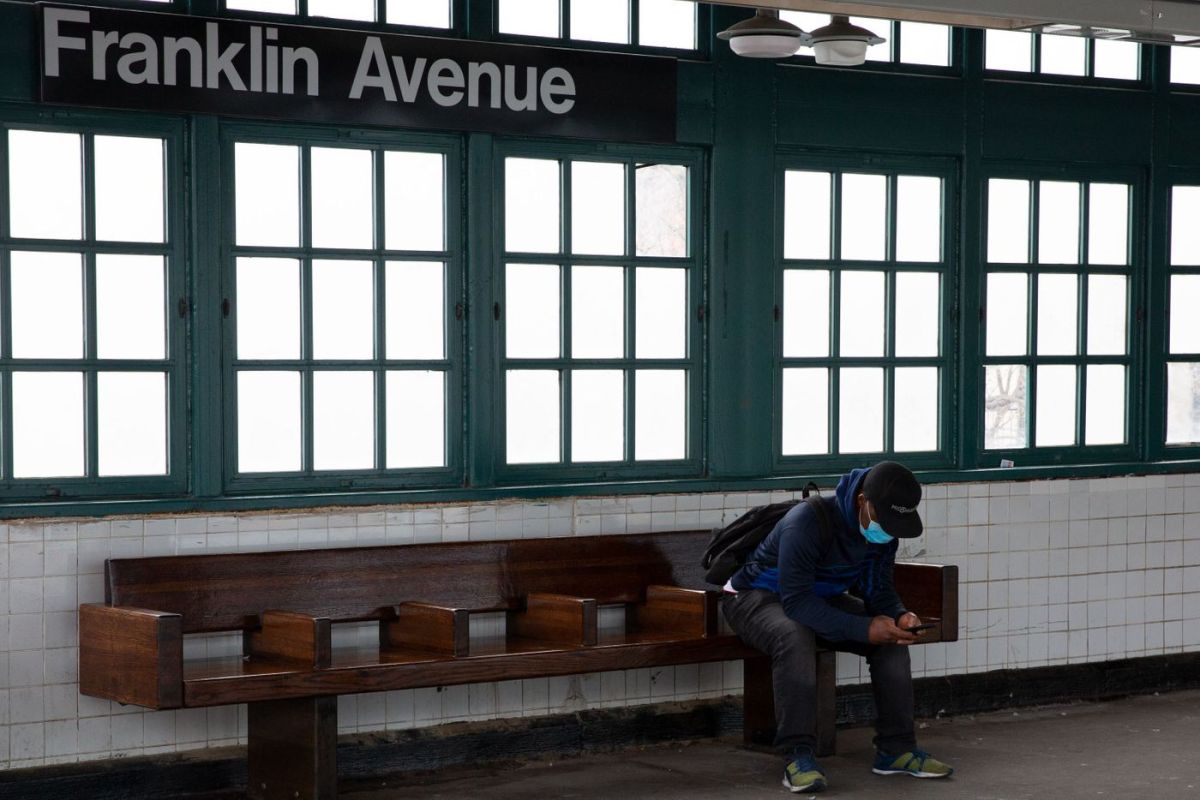
BY JOSE MARTINEZ This story was originally published on April 9, 2020 by THE CITY.
A young pharmacy technician says she’s shaken by the stares she gets on near-empty subway platforms in the early morning.
A city employee reports being chased out of a station by a woman asking her, over and over, if she has coronavirus.
A nurse practitioner spoke of recently being accosted by a man who demanded her bag of groceries.
“I work with vulnerable people,” said Karalyn Dennis, 32, of Harlem, who takes the No. 1 train to and from her nursing job in Tribeca. “It’s really heartbreaking, because I want people to have food to eat, I want them to have a warm place to sleep. But it doesn’t feel safe.”
The latest ridership and crime statistics, along with interviews with more than a dozen subway users, show daily commutes have been radically altered for the “essential” workers still relying on stripped-down train service during the coronavirus pandemic.
Subway use has dropped 92% from the same period last year, according to the MTA, with worker absences at about four times the normal rate. More than 40 subway and bus employees have died of COVID-19.
Even as trains and stations have emptied, NYPD figures show that transit system crime dropped in March by 3% — or five fewer complaints — compared to the same four-week period in 2019.
On Tuesday, a man was stabbed to death on a J train in Brooklyn. On March 27, a subway motorman died in a train fire that authorities called arson. There was one murder in the subway system all of last year.
‘As Safe as Possible’
Sarah Feinberg, interim president of New York City Transit, said vendors and shopkeepers in subway stations have been advised to take extra precautions to safeguard their spaces amid an increase in attempted break-ins.
“We will do everything we can and pull every lever possible to ensure that people are as safe as possible when they are in our system — both during this crisis and after,” she told THE CITY.
Riders, many of them among the essential workers keeping the city going, say taking the subway has become an unnerving experience.
With service reductions, some rush-hour trains have too many people for safe social distancing, some commuters said. Yet much of the rest of the time, trains and stations are sparsely populated.
“It’s an underground ghost town,” said Marsha Landar, a 61-year-old health care worker from Queens, noting she usually sees no more than 10 people on the platform while waiting for an F train to Manhattan.
“Waiting on the platform, it sometimes feels like a train is never coming,” said Bianca Naidoo, 23, a pharmacy technician from The Bronx who works nears Columbus Circle in Manhattan. “The platforms are definitely scary for me, because early in the morning, it’s not that many people and I can see people staring at me.”

MTA figures obtained by THE CITY show that on Tuesday and Wednesday this week, there was, over 24 hours, an average wait time of nine-and-a-half minutes between trains on all lines. From 8 a.m. to 9 p.m., according to the MTA data, the wait time was seven-and-a-half minutes.
“I’m thankful they can even keep it running at all,” Ralph Yedinak, 63, a chef who commutes between Downtown Brooklyn and the South Bronx. “You plan for it the best you can, and the place where I’m working, they understand I’m going to be late.”
The transit agency this week increased frequency on the No. 2 line, whose average time between trains on Tuesday and Wednesday was 11 minutes, among the longest in the system. Prior to the pandemic, the No. 2 line averaged three minutes between trains from 8 a.m. to 9 a.m.
“The MTA is undertaking a Herculean effort to run the best service possible with the hard-working crews we have available to move the doctors, nurses, first responders, child-care workers and other essential personnel on the front lines of this crisis,” Abbey Collins, an MTA spokesperson, said in a statement.
Keeping a ‘Safe Distance’
Mike Strand, 38, called his commute from Bay Ridge to Downtown Brooklyn “a daily nerve-wracking experience” that he tries to map out via Google Maps and the MyMTA app.
He said the waits on platforms are “tense.”
“I often look around a lot, to make sure people are a safe distance from me,” said Strand, who works at a wine and liquor store that’s among the businesses deemed “essential” by the state.
Lanier Lewis, 34, who commutes from Bushwick to his job as a floor manager at a Brooklyn Heights grocery store, said he’s seen “little to no police presence” in subway stations.
“Last time I saw officers in the stations was about three weeks ago,” he said.
The city employee who said she was chased looks forward to stepping out of the subway each morning and taking an elevator up to her office.
“It’s almost like an elevator to heaven,” said the woman, who didn’t want her name used. “Almost.”
This story was originally published on April 9, 2020 by THE CITY, an independent, nonprofit news organization dedicated to hard-hitting reporting that serves the people of New York.

































